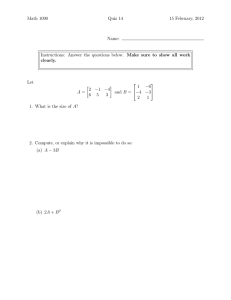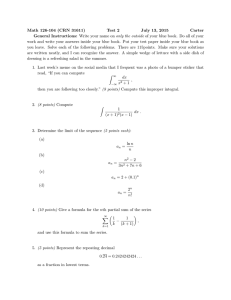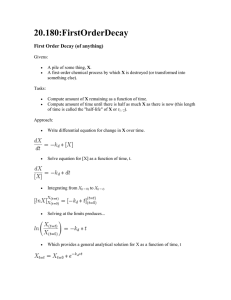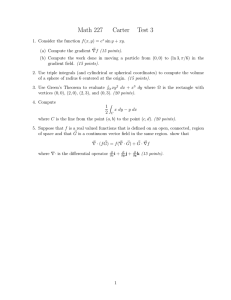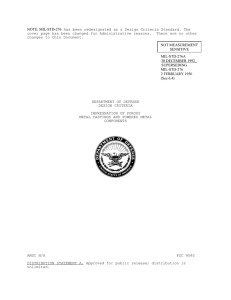Exam 2 14.30 Fall 2003 Inst.:Herman Bennett
advertisement
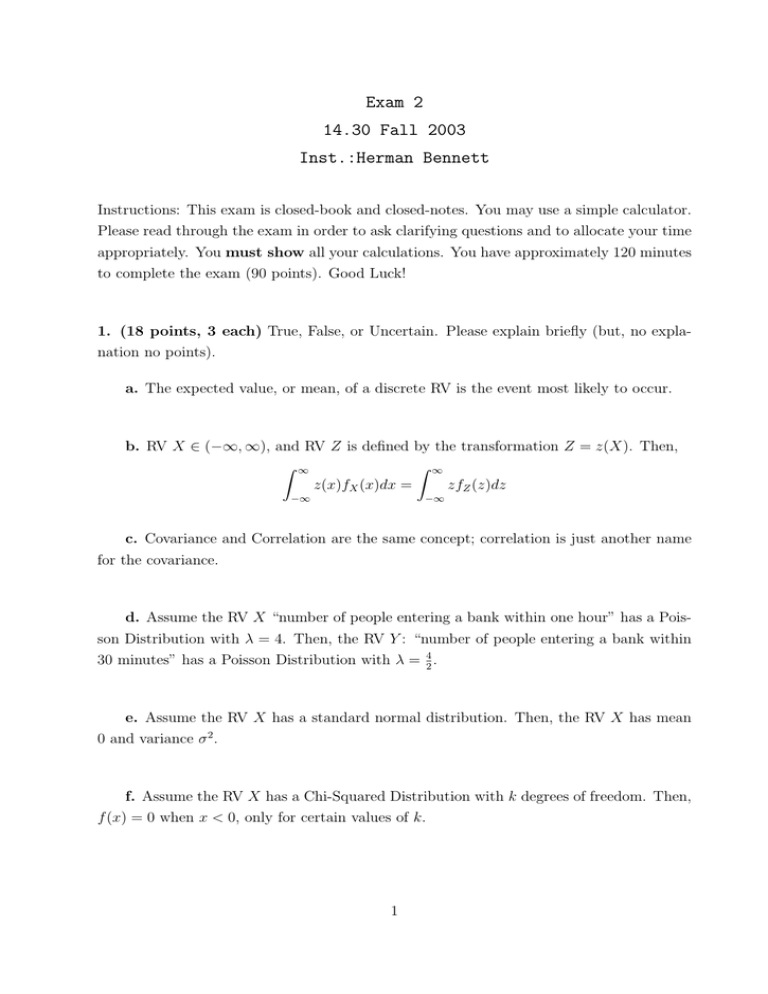
Exam 2 14.30 Fall 2003 Inst.:Herman Bennett Instructions: This exam is closed­book and closed­notes. You may use a simple calculator. Please read through the exam in order to ask clarifying questions and to allocate your time appropriately. You must show all your calculations. You have approximately 120 minutes to complete the exam (90 points). Good Luck! 1. (18 points, 3 each) True, False, or Uncertain. Please explain briefly (but, no expla­ nation no points). a. The expected value, or mean, of a discrete RV is the event most likely to occur. b. RV X ∈ (−∞, ∞), and RV Z is defined by the transformation Z = z(X). Then, � ∞ � ∞ z(x)fX (x)dx = zfZ (z)dz −∞ −∞ c. Covariance and Correlation are the same concept; correlation is just another name for the covariance. d. Assume the RV X “number of people entering a bank within one hour” has a Pois­ son Distribution with λ = 4. Then, the RV Y : “number of people entering a bank within 30 minutes” has a Poisson Distribution with λ = 24 . e. Assume the RV X has a standard normal distribution. Then, the RV X has mean 0 and variance σ 2 . f. Assume the RV X has a Chi­Squared Distribution with k degrees of freedom. Then, f (x) = 0 when x < 0, only for certain values of k. 1 2. (16 points) Let X, Y , and Z be RVs with pdfs fX (x), fY (y), and fZ (z). Also, let g(X) and h(Y ) be functions of X and Y respectively. Show the following propositions are true. (Hint: For part a, b, and, c you are expected to use the formal definition of expectation (involving integrals); for part d, you can use any of the previous results without proving them.) a.(4 points) E(aX + b) = aE(X) + b. b.(4 points) If X and Y are independent, then E[g(X)h(Y )] = E[g(X)]E[h(Y )]. c.(4 points)E[ZE(Y |Z)] = E(ZY ) d.(4 points) COV [Z, E(Y |Z)] = COV (Z, Y ). 3. (16 points) Assume the following pdfs: � 3 2 x if 0 ≤ x ≤ 2 8 fX (x) = 0 otherwise. fY |X (y |x) : U [−1, X] a.(12 points) Find E(X), E(X 2 ), the standard deviation of X, and VAR(3X + 2). b.(4 points) Find E(Y ). (Do not forget Questions 4 and 5.) 2 4. (20 points) Let X ∼ U [θ0 , θ1 ]. Define a new RV Y as Y = |3X − 2|. (Do not forget to give your answer ∀y.) a.(7 points) Assume θ0 = −0.5 and θ1 = 0.5. Using the 2­step method, compute the pdf of Y , fY (y). (You are expected to show your work in detail.) b.(8 points) Now, assume θ0 = 0 and θ1 = 1. Using the 1­step method, compute the pdf of Y , fY (y). (You are expected to show your work in detail.) c.(5 points) Do you agree or disagree with the following statement? (Please explain why or why not). “Whenever you need to perform a transformation of one or more random variables, you need to compute the Jacobian”. 5. (20 points) Assume that the length (in days) of pregnancy (that is the time from impregnation to the delivery of the child) is approximately normally distributed with µ = 260 and σ 2 = 144 , a where a is just a constant. a.(3 points) Assume a = 4. Compute the probability that a pregnancy takes at most 270 days. b.(4 points) Assume a = 4. Compute the probability that a pregnancy takes less than 270 days but more than 254. c.(3 points) Assume a = 4. Define a new RV W as W = X 6 − 43.33. Find the value w¯ such that P (−w¯ ≤ W ≤ w) ¯ = 90%. d.(10 points) A “potential” father is being sued for paternity. He claims he is not the father, and argues that he was out of the country during a period that began 275 days before the birth of the child and ended 245 days before the birth of the child. Assume the judge is willing to declare he is not the father only if there is at least 90% probability that the impregnation occurred during the period where the “potential” father was out of the country. For which values of a will the “potential” father be declare the legal father? Please also provide an intuitive explanation for your result. 3


